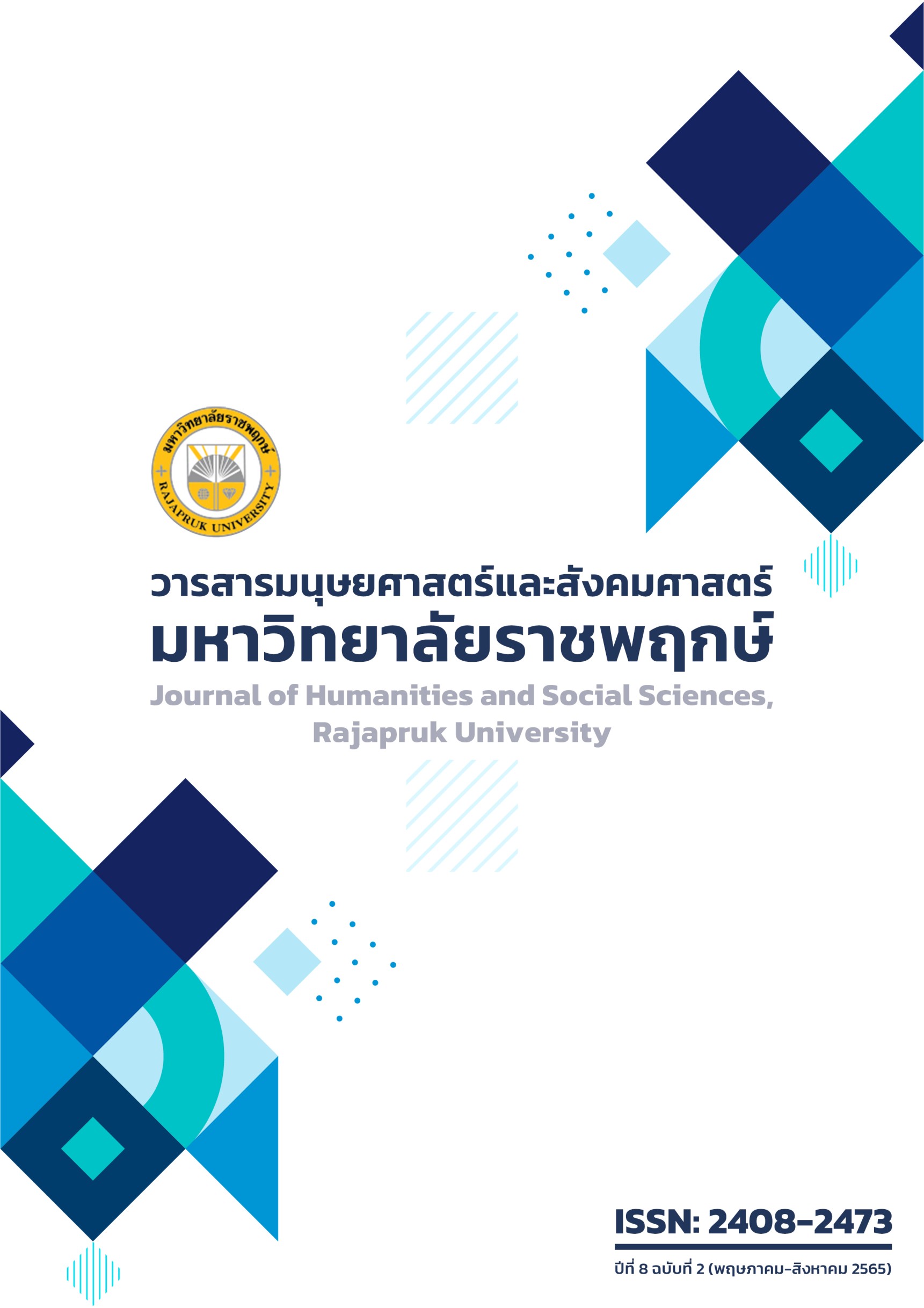Development of Promoting Moral and Ethical Model for Students in Christian University of Thailand
Main Article Content
Abstract
The purpose of this study was to develop the Promoting Moral and Ethical Model for Students at the Christian University of Thailand. The sample was the committee for the development of undergraduate students and full-time lecturers, 34 people and 336 first-year students of the academic year 2020, 183 students were random with a simple drawn for the study of problem conditions by selecting representatives of each course, a total of 44 people. The research instruments consisted of a problem condition interview form, problem condition questionnaire, model of action to strengthen students' morality and ethics, model Efficiency Evaluation Form by measuring the consistency of the pattern with objectives, model trial action plan, pre-and post-test model evaluation form, evaluation form the use of the efficiency, effectiveness and value model, the model satisfaction assessment form. The investigation of the quality of the research instruments was performed by using the index of consistency of question and objective consistency by five experts. The statistics used for data analysis were percentage, mean, standard deviation, Content analysis, and t-test.
The results found that the problems in the moral and ethical enhancement of Christian university students were moderate level. The model was composed of 3Hs activities: Head, Heart, and Hand. The efficiency value by the Item-Objective Congruence (IOC) was 1.00 for every item. The experiment was processed with the action plan and found that the scores of post-test were higher than pre-test at the statistical significant .01 level. The moral and ethical enhancement model was the highest levels of efficiency, effectiveness, value, and satisfaction. The recommendations for the application of the moral and ethical enhancement model for university students should be varied with the various activities for different years of the students.
Article Details
References
กมลชนก รักษาวงศ์ และ วิมล หอมยิ่ง. (2560). ประสิทธิผลของโครงการฝึกอบรมด้านการอนุรักษ์พลังงานและสิ่งแวดล้อมอุทยานสิ่งแวดล้อมนานาชาติสิรินธร อำเภอชะอำ จังหวัดเพชรบุรี. วารสารสาขามนุษยศาสตร์สังคมศาสตร์และศิลปะมหาวิทยาลัยศิลปากร, 10(2): 205-219.
ธณัฐชา รัตนพันธ์ สรเดช ครุฑจ้อน และ มนต์ชัย เทียนทอง. (2561). การจัดกิจกรรมการเรียนรู้แบบผสมผสานตามหลักทักษะชีวิต 4H เพื่อให้ได้คุณลักษณะบัณฑิตที่พึงประสงค์ของนักศึกษาคณะครุศาสตร์. วารสารมหาวิทยาลัยนราธิวาสราชนครินทร์ สาขามนุษยศาสตร์และสังคมศาสตร์, 5(ฉบับพิเศษ): 15-25.
นิติ นาชิต ชัยวิชิต เชียรชนะ และ ริรักษ์ รัชชุศานติ. (2560). การประยุกต์ใช้รูปแบบการประเมินหลักสูตรวิชาชีพระยะสั้นตามแนวคิดการประเมินแบบเสริมพลังอำนาจในสถานศึกษาอาชีวศึกษา. วารสารศึกษาศาสตร์ มหาวิทยาลัยนเรศวร, 19(3): 180-197.
ประภัสสร สมสถาน และ จักรกฤษณ์ โปณะทอง. (2563). การพัฒนารูปแบบกิจกรรมเพื่อเสริมสร้างคุณลักษณะจิตบริการของนักศึกษามหาวิทยาลัยพายัพ. วารสารสันติศึกษาปริทรรศน์ มจร, 8(6): 2425-2438.
ประยูรศรี กวานปรัชชา พจมาน ชำนาญกิจ ภูมิพงศ์ จอมหงส์พิพัฒน์. (2559). การพัฒนารูปแบบกิจกรรมเสริมสร้างคุณธรรมด้านความมีวินัยสำหรับนักเรียนชั้นประถมศึกษา. วารสารมหาวิทยาลัยนครพนม, 6(2): 52-60.
พระมหาประยูร ติกฺขปญฺโญ (ช่างการ) แม่ชีระเบียบ ถิรญาณี. (2559). การประเมินเสริมพลัง: มิติใหม่ของการประเมินเพื่อการพัฒนางาน. วารสารครุศาสตร์ปริทรรศน์ฯ, 3(2): 163-169.
พัชรี ปิยภัณฑ์. (2562). การพัฒนารูปแบบการจัดกิจกรรมเพื่อเสริมสร้างคุณธรรมจริยธรรมสำหรับนักเรียนชั้นประถมศึกษาปีที่ 6. รายงานการวิจัย มหาวิทยาลัยราชภัฏธนบุรี.
ฤดีมาศ ศรีสุข. (2557). การประเมินหลักสูตรสถานศึกษาโรงเรียนในฝัน ระดับชั้นมัธยมศึกษาปีที่ 1–6 โดยใช้แนวคิดการวัดผลเชิงดุลยภาพ (Balanced Scorecard) กรณีศึกษาโรงเรียนราชวินิตบางเขน. รายงานการวิจัย มหาวิทยาลัยธรรมศาสตร์.
Rovinelli, R.J. and Hambleton, R.K. (1976). On the use of content specialists in the assessment of criterion-referenced test item validity. Paper presented at the annual meeting of the American Educational Research Association : California. April 19 –23, 1976: Retrieved on February 3rd, 2018, from https://files.eric.ed.gov/fultlext/ED121845.pdf. 1-35.


